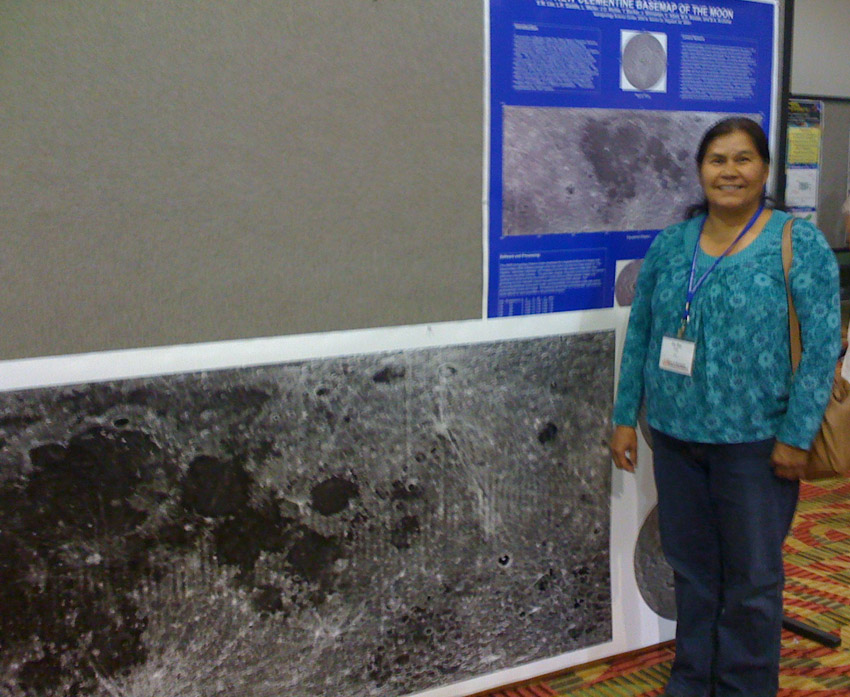March 27, 2009
A New Standard

image from Chuck Wood's iPhone
The mosaic produced by combining 43,000 tiny Clementine images has been the workhorse for anyone who used Map-A-Planet, including many lunar scientists. Now Ella Lee (pictured above) and colleagues at the US Geological Survey in Flagstaff have produced a new and improved version of the mosaic. As " rel="nofollow presented at the 40th Lunar & Planetary Science Conference the mosaic has much better contrast than the previous one and has filled in the gaps (with images from other filters). Less visible are the photometric and geometric corrections, the latter accomplished by controlling the positions of each of the images by the USGS 2005 Global Control Network, which minimizes previous distortions from frame-to-frame mis-registrations. I am afraid that this new standard will not have a long life. With the upcoming release (at LPSC it was promised for November) of the Kaguya data a higher resolution and more constant sun angle mosaic may become available. Add to that the announced Chinese mosaic and hopefully one from India, and the upcoming flood of data from America's LRO, we may have our choice of mosaics. But this Clementine one will always have value because of its now more precise documentation of the Moon during 30 days in 1994. The new mosaic is available at " rel="nofollow Map-A-Planet.
" rel="nofollow Chuck Wood
Technical Details
This new mosaic, like the earlier one, is based on the near-visible (750 nm) wavelength images. I was overjoyed on receiving an answer of Yes when I suggested to Ella that I could take the large photographic print of the mosaic so that she would not have to bother taking it home! Now I need a long wall to hang it on.
Note: It was announced that Kaguya/Selene will impact the Moon this summer, probably in June. It will hit an illuminated portion so that the HDTV can image the surface all the way to impact! This will be a modern high definition version of the Ranger spacecraft impacts - I hope it will be broadcast live, as were the Ranger impacts.



